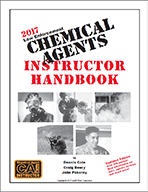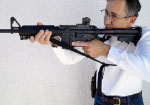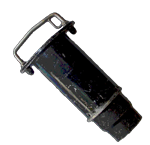If you are not aware, the Ninth Circuit Court of Appeals just upheld a District court ruling the Use of Force Policy of Seattle PD, which was written without officer’s input, is not a violation of the Officers constitutional right to protect themselves. The officers felt that the new policy forced upon them by the U.S. DOJ are making their jobs more dangerous.
It is interesting that the federal courts are upholding a policy written completely by lawyers that work for the DOJ. You should review your Use of Force Policy and compare it to Seattle’s, which is now a court approved policy.
This policy raises the use of OC to the same level of force as the taser, baton, bean bags and K-9s. We all know it doesn’t come close to inflicting the damage to the human body as any of those tools.
In relation to the use of OC spray the policy sets out:
1. Education & Training Section (ETS) Will Train and Certify Officers in the Use of OC Spray Every Two Years
2. Officers Shall Only Use Department-Issued or Approved OC Spray
3. Officers Will Use OC Spray, Including for Crowd Dispersal or Protection, Only When Such Force is Objectively Reasonable.
For use of OC spray in the context of crowd management, see Manual Section 14.090 #10.
a. OC Spray May Be Used Against a Dangerous Animal to Deter an Attack or to Prevent Injury to Persons Present
b. OC Spray Shall Not Be Used Unless the Use of Physical Force Is Necessary
4. Officers Shall Issue a Verbal Warning to the Subject, Fellow Officers and Other Individuals Present Prior to Using OC Spray
Exception: A verbal warning is required if feasible and unless giving the warning would compromise the safety of the officer or others.
5. Officers Must Justify Each Separate Application of OC Spray
6. Officers are Required to Report the Use of OC Spray, Regardless of the Effect, as Well as the Decontamination Procedures That Followed
7. The Application of OC Spray on Persons in Restraints Such As Handcuffs Must Be to Protect an Officer or Member of the Public from Physical Injury
8. Officers Shall Direct OC Spray at the Specific Subject(s) Who are Posing a Threat.
9. Officers Shall Assist Exposed Subjects with Decontamination and Water- Flushing of Exposed Areas as Soon as Feasible.
If the subject was exposed inside or in a confined space, officers will remove the subject as soon as possible from the contaminated area and expose the individual to fresh air.
Officers shall request medical response or assistance for subjects exposed to chemical spray when they complain of continued effects after having been decontaminated, or they indicate that they have a pre-existing condition (such as asthma, emphysema, bronchitis, or heart ailment) that may be aggravated by chemical spray.
Officers shall monitor exposed subjects for changes in their condition while in police custody and request medical evaluation as needed.
10. The Department Shall Maintain Written Documentation of the Number of OC Spray Canisters Annually Distributed to, and Utilized by, Each Employee.
Officers must ask a Lieutenant to check out a can of OC Spray. It must be entered into a log. After its use, the OC spray must be returned to the Lieutenant so he can verify the content of the OC canister and mark on a log that it was turned in.
During crowd control, specially trained officers can use Blast Balls if authorized by a Lieutenant. Blast Balls are a blast dispersion OC rubber ball grenade. Training video of Blast Balls.
These are some of the highlights of the now court approved policy. It would be well worth your while to read the entire policy and the ninth circuit findings. Pay attention to the de-escalation policies.
The Ninth’s conclusion on the policy are:
“The City of Seattle has a significant interest in regulating the use of department-issued firearms by its police officers, and the UF Policy does not impose a substantial burden on the Second Amendment right to use a firearm for the core lawful purpose of self-defense. Therefore, we apply intermediate scrutiny to determine whether the UF Policy violates the Second Amendment right of its police officers. We conclude that the UF Policy is constitutional under the Second Amendment because there is a reasonable fit between the UF Policy and the City of Seattle’s important government interest in ensuring the safety of both the public and its police officers. We affirm the district court’s dismissal of Appellants’ Second Amendment claim. We affirm the ruling of the district court on all other grounds.”
Here is a link to Seattle’s Use of Force Policy
Here is the link to the Ninth Circuit Decision
Here is a link to an excerpt from Seattle policy that pertain to OC and Blast Balls
Newspaper Article





